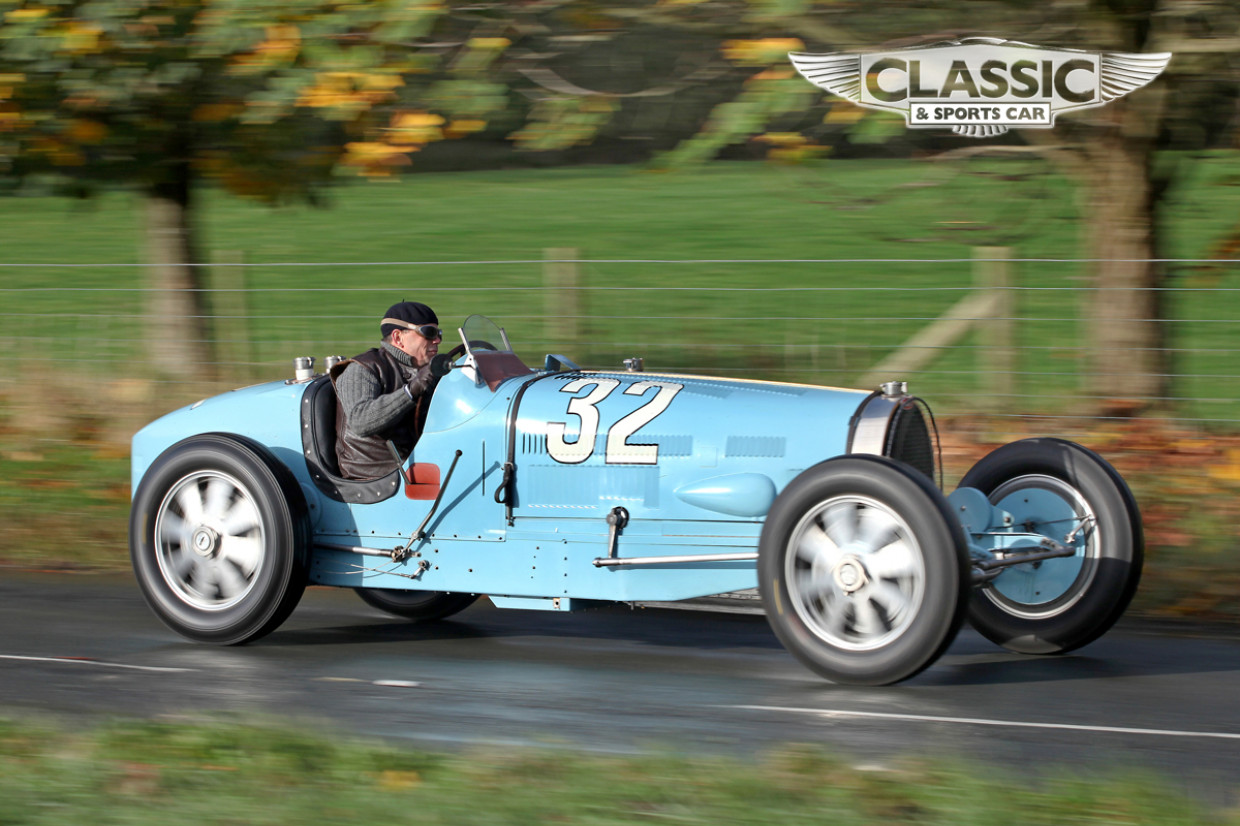The Type 54’s unfair reputation as the ‘Widow Maker’ largely evolved from the grim Italian GP at Monza three months later. After his record-breaking success at Avus and a win in the British Empire Trophy at Brooklands, the privateer Count Czaykowski was in confident mood for the fast Italian circuit. The Polish aristocrat easily won his first heat but, like his fellow competitors, was no doubt shaken by the news of the deaths of Giuseppe Campari and Baconin Borzacchini in the second heat. Undaunted, he fearlessly roared off into the lead of the final, setting fastest lap before losing his Type 54 under braking into the South Curve, on the same oil that had caught out his rivals, with disastrous consequences. The heavy Bugatti crested the circuit wall, overturned and burst into flames. The Polish racer was trapped, and was already dead when pulled clear. Although not a works driver, Czaykowski was a favoured customer who was rumoured to have given financial backing to Bugatti during those tough economic times.

The last person to race a Type 54 competitively was maverick designer Bill Milliken. In 1950, American owner Dr Sam Scher invited Milliken to enter the by then road-equipped, 18-year-old machine in the Watkins Glen GP. When the team discovered that the gearbox casing – which also acts as a chassis brace – was badly cracked after the car was dropped during shipping from Le Havre, Milliken had the inspired idea of fitting a modified Dynaflow GM torque converter. General Motors even gave the team a hand by casting a special bellhousing. “The ratio situation worked out very nicely, giving a calculated top speed of 125mph and a max speed in the low range of 75mph,” recalled Milliken. “I had to shove it into the low range for additional braking coming down long hills, which gave tremendous retarding force without locking up the rear wheels.” The team also fitted new Houdaille lever-arm shock absorbers to the front, but during early tests Milliken experienced an alarming shimmy: “It felt as if the whole front end was coming apart before we realised that the old friction shocks had helped to stabilise the front axle torsionally.” During the night before the Watkins Glen race, the mechanics at Flight Research made up an elaborate parallelogram to reinforce the front end. “The car was dynamically nose-heavy as I found out during practice,” continued Milliken. “When I took the railroad crossing at 80mph, the car flew through the air for 30-40ft, landing heavily on the front wheels. Fortunately, they were still pointed forward.” Competing against Sam Collier’s exotic new Ferrari 166, plus a battalion of Allards and Jaguar XK120s, Milliken qualified the Type 54 on the front row alongside Tom Cole’s quick J2.

Milliken inherited the lead when the Allard spun into a ditch, but he soon had Collier to contend with. Tragedy unfolded as the Ferrari cartwheeled off, killing its wealthy driver, then Milliken lost the Type 54 on the sixth lap while chasing the leading Allards through Townsend Road Corner, and ended up caught beneath his racer. Struggling to release his aircraft-style safety-belt buckle, Milliken just managed to wriggle out before dripping fuel ignited on the hot exhaust. Miraculously, he escaped unharmed and the Bugatti was not badly damaged.

Once repaired, the Type 54 was entered for Giant’s Despair hillclimb. Again it proved fast in the unlimited class, but Milliken confessed that he had most fun in the car on the road, when not hindered by the police: “I often drove the Bugatti down and back for events. Once near Aurora I easily outdistanced a cop who started after me, but I was nailed returning through the same town when he easily recognised the car.” On another occasion, he refuelled the Type 54 at a gas station in Pennsylvania that, unknown to Milliken, was run by the local Justice of the Peace. After patiently showing the gentleman attendant the engine, Milliken roared off, only to be stopped a few miles down the road by a policeman. Back in town, the Justice insisted that he couldn’t have been breaking the law, much to the frustration of the speed cop who stormed out of the court. “One of the greatest runs I ever had with the ‘Big Bug’ was a return trip from Watkins Glen,” said Milliken. “It was one of those marvellous, cool days in the fall with the foliage ablaze and I chose interesting back-roads. You could stand on it out of a slow bend and wind up to 100mph. Through every town one had an audience, and occasionally I would pull up and show the engine to the assembled kids.”











